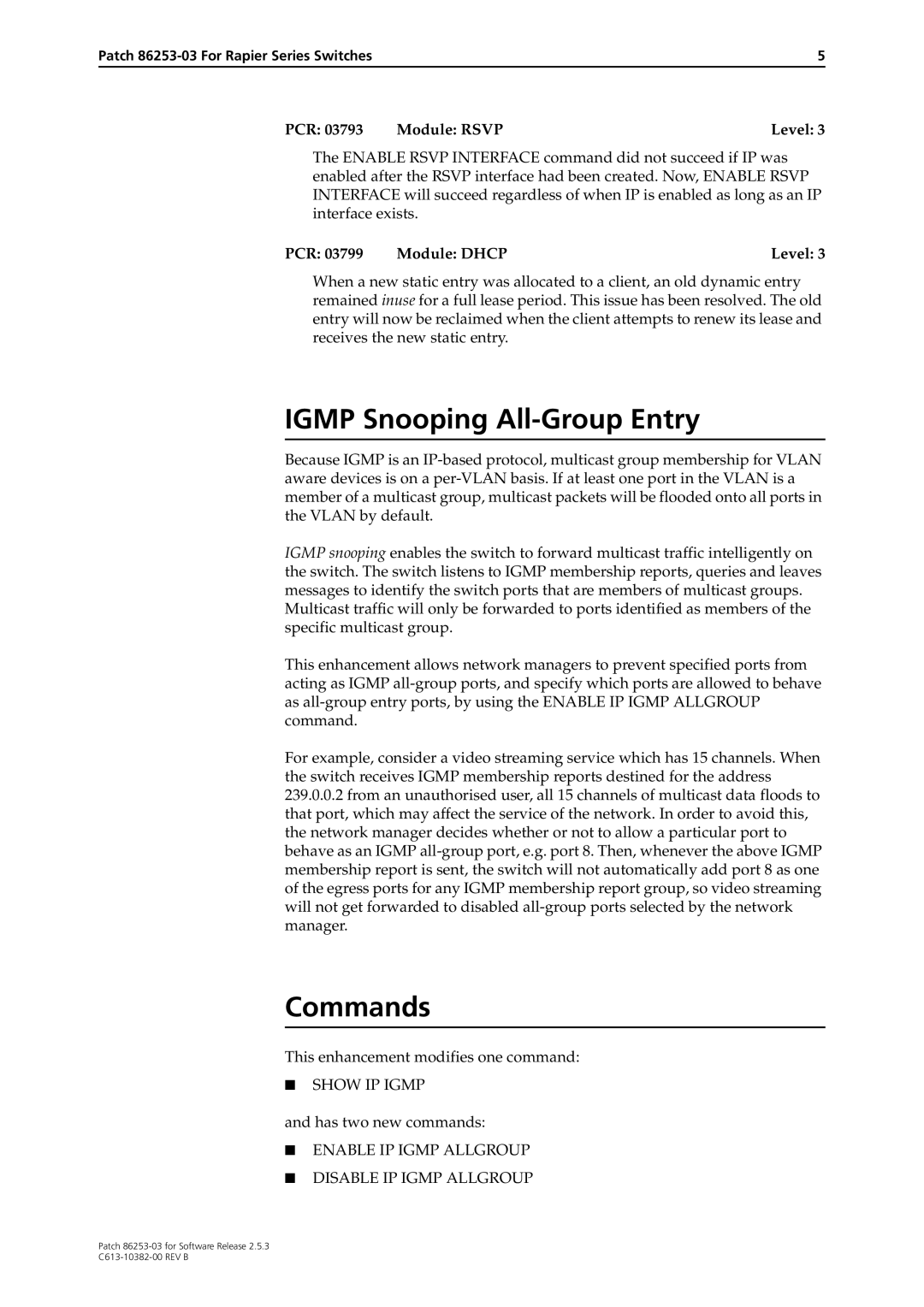Rapier Series specifications
The Allied Telesis Rapier Series represents a cutting-edge line of managed Ethernet switches designed for a variety of networking environments, including enterprise, campus, and industrial applications. Known for their advanced capabilities, reliability, and scalability, these switches are engineered to meet the ever-increasing demands for network performance and efficiency.One of the standout features of the Rapier Series is its support for high-performance Layer 2 and Layer 3 switching. This dual capability allows for efficient management of network traffic, ensuring that data can flow without bottlenecks. With a robust architecture, the Rapier switches are capable of handling high-throughput applications, which makes them suitable for environments requiring constant connectivity and minimal downtime.
The Rapier Series incorporates advanced Quality of Service (QoS) mechanisms, enabling network administrators to prioritize traffic based on application needs. This is essential for applications such as VoIP and video conferencing, where latency and packet loss can significantly impact performance. By allowing precise control over traffic flows, the Rapier Series helps organizations maintain optimal user experiences even during peak usage.
Security is another critical focus of the Rapier Series. The switches come equipped with features such as IEEE 802.1X port-based authentication, which helps prevent unauthorized access to network resources. They also support VLANs (Virtual Local Area Networks), allowing for the segmentation of network traffic, which is crucial for both performance and security. Additionally, the switches offer features like Access Control Lists (ACLs) to provide further granular control over data access and flow.
The Rapier Series also emphasizes energy efficiency. With features such as Energy Efficient Ethernet (EEE), these switches minimize power consumption, aligning with global sustainability efforts and reducing operational costs. This attribute makes them an attractive choice for organizations looking to minimize their environmental footprint while keeping operational efficiency in mind.
In terms of management capabilities, the Rapier Series offers a range of options, including a user-friendly web-based interface, command-line interface (CLI), and SNMP (Simple Network Management Protocol) support. These facilitative management tools enable network administrators to monitor performance, configure settings, and troubleshoot issues in real time.
Overall, the Allied Telesis Rapier Series offers a comprehensive solution for modern networking challenges. With its blend of high performance, security features, energy efficiency, and user-friendly management options, the Rapier Series stands as a formidable choice for organizations aiming to build robust and reliable networks. Whether for small enterprises or large-scale deployments, the Rapier switches deliver the performance and flexibility needed to adapt to the dynamic demands of today’s networking landscape.

